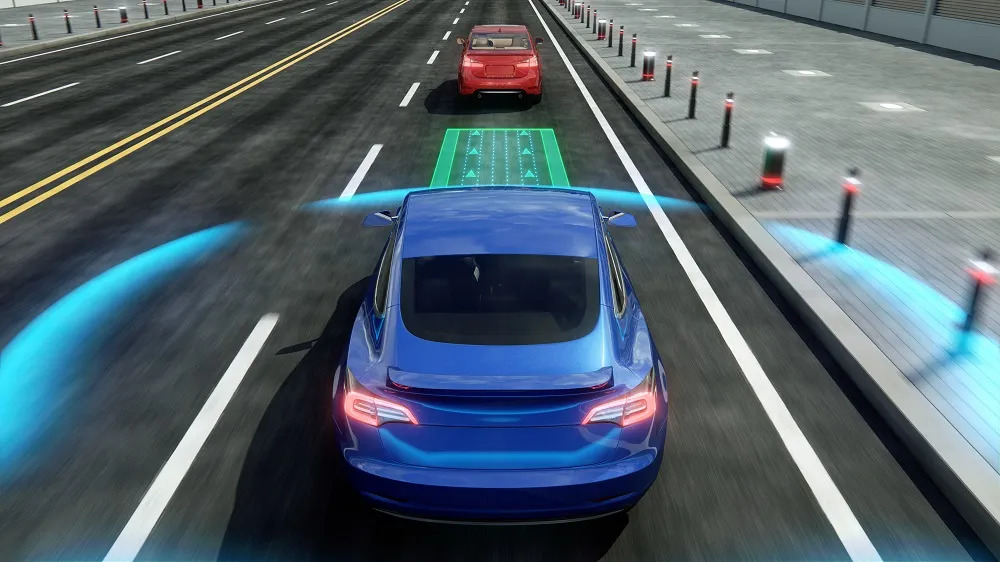Europe LiDAR market size was USD XX billion in 2023 and the market is projected to touch USD XX billion by 2032, at a CAGR of XX % during the forecast period. LiDAR is a short form of Light Detection and Ranging and this remote sensing method uses light in the form of a pulsed laser to measure distances to Earth’s surface. It is similar to employing a laser pointer to establish how distant things are. This technology is much used in mapping, surveying and navigation thus making it indispensable especially to sectors like transportation, urban planning and environmental monitoring. Market is growing fast because of technology improvement and its applications increase in diverse fields.
The demand for accurate and comprehensive mapping data is one thing that significantly boosting the European LiDAR sector. LiDAR permits detailed geographical mapping necessary during urban planning, construction of infrastructure and management of natural resources. This has also caused its use in navigation and obstacle detection by self-driving cars as well as drones hence contributing towards growth of their markets. Currently, no company has been able to come up with definitive solution to these problems. However, it is important to note that both high entry fees and the intricacies of handling information act as a blockade to the use of these technologies on a large scale even with a few individuals having tested them in limited areas or applications. In addition, the demand for lighter, faster more flexible products has spurred growth in the European LiDAR industry.
Europe LiDAR report scope and segmentation.
Report Attribute
Details
Base Year
2023
Forecast Years
2024–2032
Estimated Market Value (2023)
USD XX Billion
Projected Market Value (2032)
USD XX Billion
Segments Covered
By Installation Type, By Product, By Component, By End-user Industry, & By Region.
Forecast Units
Value (USD Million or Billion)
Quantitative Units
Revenue in USD million/billion and CAGR from 2024 to 2032.
Regions Covered
Europe
Countries Covered
U.K., Germany, France, Italy, Spain, and rest of Europe.
Europe LiDAR dynamics
Progress in technology continues to promote creativity in relation to LiDARS thus improving their efficacy, lowering costs and saving time. Currently, this has increased the acceptance of LiDARS by a number of firms that engage in various sectors including manufacturing, automobile industry, weather department since it can be used in climate forecast among others. Additionally, there is an increase in market size triggered by the demand for LiDAR products used in city development and infrastructure planning.
Moreover, the way the European LiDAR market functions mostly depends on government regulations and actions taken. There is an incentive to use LiDAR in forest management, for instance. Flood risk appraisal and green energy initiatives can also use the geospatial technology under policies that promote environmental sustainability as well as infrastructural improvements. In addition, research and development in LiDAR is supported by funding programs and grants which aim at contributing to the market growth through enhancing innovation and competitiveness of the market. However, with market expansion, there exists data privacy issue controversy and regulatory compliant issues that can be an obstacle.
Europe LiDAR drivers
Regulatory Support and Standards
One of the significant drivers for the market growth is government regulations and standards that support how LiDAR technology is integrated across different industries. In the automotive sector, for example, rules on the use of LiDAR to enhance safety of self-driving cars drives up demand. Regulatory bodies use norms in ensuring the quality and reliability of LiDAR systems that builds trust in final consumers and increase acceptance across various applications.
Get Complete Research report: https://organicmarketresearch.com/europe-lidar-market
Demand for High-Quality Geospatial Data
A catalytic factor for the European LiDAR market is the escalated need for accurate geospatial information for city designing, ecological examination and establishment of infrastructure. Significant terrain mapping, building modelling, and vegetation analysis with great accuracy are made possible due to LiDAR technology which also helps in collecting data about the exact location for industries that are interested in precision spatial data. With the growth of cities and complex infrastructure developments, the market continues to grow due to rising demand for LiDAR-derived geospatial data.
- Restraints:
Limited Interoperability and Integration Challenges
The limited interoperability and integration challenges with existing systems and workflows restrict European LiDAR market expansion. Often, there is a requirement where LiDAR data is combined with various spatial data sources like GIS platforms and CAD software to become technically complex thus consuming time as a process. Accordingly, smooth data incorporation and cooperation can suffer if divergent LiDAR schemes and data formatting fail to be compatible which thus qualifies as a bottleneck to the growth of the market.
Lack of Skilled Workforce
Another growth inhibitor in the market is the lack of skilled professionals who have expertise in LiDAR technology and data analysis. Shortage of personnel with specialized competencies in remote sensing, photogrammetry, and geospatial analysis also hampers LiDAR data processing and interpretation. The need for skilled workers slows down the maturity as well as the use of LiDAR technology across a variety of sectors, hampering its marketability and application possibilities.
- Opportunities:
Emerging Applications in Environmental Monitoring
In European LiDAR market, importance on environmental sustainability is increasing and this poses considerable opportunity, especially in forestry management, biodiversity assessment, and climate change monitoring among many other issues. The technology of LiDAR makes precise measurements and analyses on terrain characteristics, vegetation structures, as well as changes in land cover allowing more effective policies for conserving our environment and monitoring it at the same time. There’s a rise in interest in using the LiDAR approach to uphold these challenges due to pressing environmental challenges. This will help unlock the potential for expansion of markets.
- Segment Overview
By Installation Type, the market is segmented into terrestrial and airborne installations. Terrestrial LiDAR systems are ground-based and typically stationary, capturing high-resolution 3D data of objects and environments from a fixed position. Common uses of LiDAR include topographic mapping, building modelling, and cultural heritage preservation. In contrast, airborne LiDAR is mounted on aircraft such as drones, helicopters or fixed-wing airplanes for rapid data collection over large scales. Aerial LiDAR finds applications in different fields like urban planning among others where precise digital elevation models are required basing on surface characteristics through construction technologies.
By Product, The Europe LiDAR is segmented into ground-based LiDAR and aerial LiDAR categories. Ground-based LiDAR systems consist of stationary sensors placed on tripods or vehicles, capturing detailed 3D data of objects and surfaces within their line of sight. Representations that involve measurements from the laser use high software tools. Applications where they are used make them important tools as long as they are depended on for designing roads. In contrast, aerial LiDAR systems are put on airborne platforms and can take aerial views of huge parts very fast. In possessions such as forest inventorying, flood mapping, and infrastructure planning, aerial LiDAR is used to provide comprehensive geospatial data for analysis and decision making.
Europe LiDAR Overview by Region
Extensive adoption of LiDAR technology by countries such as Germany, France and the United Kingdom has made Western Europe a leading market in the industry especially in automotive, aeronautics and urban planning fields. Innovation and market growth are therefore boosted in these countries by their strong infrastructure and research bases. Central and Eastern European regions, including Poland, Czech Republic, and Hungary, are witnessing increasing investment in LiDAR technology for infrastructure development and environmental monitoring, supported by government initiatives and EU funding programs. Nordic countries like Sweden and Finland are at the forefront of LiDAR adoption, particularly in forestry management and renewable energy projects, leveraging their expertise in geospatial technology and environmental conservation. Southern European countries such as Italy and Spain are also experiencing growing demand for LiDAR solutions in agriculture, archaeology, and cultural heritage preservation applications.
Europe LiDAR market competitive landscape
Key players such as Velodyne Lidar, Inc., Teledyne Optech, and Leica Geosystems AG dominate the market with their comprehensive product portfolios, advanced technology solutions, and extensive industry experience. These companies focus on strategic partnerships, product innovations, and geographic expansion to maintain their competitive edge. Additionally, the market witnesses a significant influx of start-ups and small to medium-sized enterprises (SMEs) offering niche LiDAR solutions tailored to specific applications or industries. These newcomers, including companies like Quanergy Systems, Inc., Ouster, Inc., and YellowScan, Inc., contribute to market competitiveness by introducing disruptive technologies, driving innovation, and addressing evolving customer demands. Additionally Sticking to the course is the enriched landscape of competition with regard to synergies from cooperative LiDAR suppliers, software vendors as well as end users accelerating development of the market.
Europe LiDAR Recent Developments
- May 2024, MicroVision, Inc. (MVIS), renowned for its LiDAR technology in automotive applications, disclosed moderate financial results in its recent earnings call. The company outlined strategic initiatives focused on securing automotive OEM partnerships and extending its reach into industrial markets. Despite facing competitive pressures and challenges within the automotive industry, MicroVision remains dedicated to its MAVIN product and MOSAIK software, aiming to establish itself as a prominent player in the evolving LiDAR market.
- March 2023, Valeo, a global leader in ADAS, announced that its SCALA 3 LiDAR had been selected by a prominent Asian manufacturer and a leading American robotaxi company. Valeo has secured orders exceeding 1 billion euros for SCALA 3, which builds upon the success of SCALA 1 and 2 in enabling conditional autonomous driving in traffic jams. SCALA 3 significantly expands the operational domain of private vehicles, offering enhanced versatility and support for higher speeds, thus increasing customer value.
- Nov 2021, Velodyne Lidar unveiled a multi-year agreement to supply its Lidar sensors to Topodrone, a Swiss-based company specializing in affordable, high-precision solutions for aerial surveys. These sensors will empower Topodrone to deliver high-precision mapping and 3D modelling in challenging environments such as farms, forests, and infrastructure projects. This collaboration aims to drive development that aligns with economic and sustainability objectives.
Contact Us:
Mob : +91 9319642100
Noida One Tower Sec 62 Noida 201301
Sales : sales@organicmarketresearch.com
Website : https://www.organicmarketresearch.com













